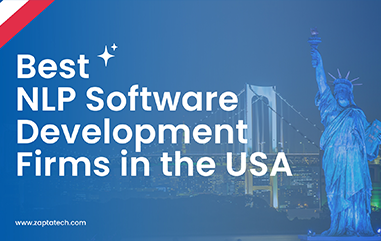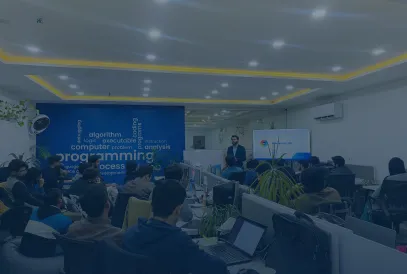Imagine a world where doctors spend more time with patients and less time wrestling with clunky software. Where medical data flows seamlessly between systems, saving lives instead of causing headaches. Sounds ideal, right? Yet, many healthcare providers are stuck with outdated, one-size-fits-all software that slows them down.
Why Custom Software Development Is The Key To Innovation In Healthcare?
Here’s the truth: innovation in healthcare isn’t just about new treatments or ground-breaking research. It’s about smarter technology—custom-built software that solves real problems. From AI-powered diagnostics to personalized patient care, custom solutions are transforming the industry.
Off-the-shelf software? It wasn’t built for your needs. Custom software? It’s designed to work exactly how you need it to. That’s the game-changer. Let’s dive into why tailored tech is the future of healthcare.
The Challenges in Healthcare Technology
Let’s be real—healthcare technology has come a long way, but it still has some serious issues. Ever tried using a hospital’s software and felt like you time-traveled back to the early 2000s? Yeah, you’re not alone.
Outdated systems are one of the biggest headaches. Many hospitals still rely on legacy software that can’t talk to modern systems. That means patient records get lost in translation, and doctors waste precious time digging through digital mazes instead of treating patients.
Then there’s compliance. Healthcare is a heavily regulated industry (HIPAA, GDPR—you name it). Off-the-shelf software often lacks built-in compliance, forcing teams to jump through hoops just to stay on the right side of the law.
And let’s not forget security. Medical data is gold for hackers, yet many healthcare systems run on outdated security protocols, making them easy targets. One breach, and boom—patient trust is gone.
Clearly, the system is begging for an upgrade. But that’s where custom software development comes in—built to fix these exact problems. Let’s see how.
How Custom Software Drives Healthcare Innovation
Now that we’ve called out the problems, let’s talk about solutions. Custom software development isn’t just a fancy upgrade; it’s a total game-changer. It’s like trading in an old flip phone for the latest smartphone. Suddenly, everything works better, faster, and smarter.
Personalized Patient Care Like Never Before
One-size-fits-all medicine is outdated. Today, patients expect treatments designed around their specific conditions, and doctors need smarter tools to deliver faster, more precise care. With custom-built AI-powered solutions, hospitals can analyze patient history, lab results, and real-time vitals in seconds.
This means diseases can be detected earlier, doctors can prevent illnesses before they even start, and treatment plans can be based on deep data insights rather than just generalized medical guidelines.
Telemedicine is another major shift that off-the-shelf solutions often fail to keep up with. Many healthcare providers use generic telehealth platforms. However, integrating them seamlessly with hospital systems, electronic health records, or patient portals is a major problem.
A custom telehealth solution can bridge these gaps, allowing remote consultations to be just as effective as in-person visits. Imagine a heart patient whose wearable device automatically updates their vitals into their doctor’s system in real-time, triggering alerts if anything looks abnormal.
Or an AI-embedded applications chatbot that provides instant responses to common patient questions, reducing the burden on hospital staff while keeping patients informed. If healthcare organizations continue relying on outdated, rigid systems, they’re not just missing opportunities; they’re affecting the quality of care they can provide.
Systems That Actually Talk to Each Other
One of the biggest frustrations in healthcare is disconnected systems. Patients have to explain their medical history over and over again because hospitals, specialists, and labs don’t share data efficiently. This isn’t just annoying, it’s dangerous. When records aren’t updated in real-time, doctors make decisions based on incomplete information, leading to misdiagnoses, incorrect prescriptions, and avoidable complications.
Custom software eliminates these barriers by creating seamless integrations between different platforms, ensuring that patient data flows effortlessly between hospitals, clinics, and diagnostic centres. If a doctor is treating a patient in an emergency room he/she should be able to instantly access their full medical history, past test results, and ongoing treatment plans without waiting on paperwork or phone calls.
When systems communicate properly, decisions are faster, errors decrease, and patient frustration disappears. The question is, if better solutions exist, why are so many healthcare providers still struggling with outdated processes?
Less Paperwork, More Patient Care
Doctors didn’t spend years in medical school just to drown in paperwork. Yet, administrative tasks like scheduling, billing, insurance claims, and data entry eat up nearly half of a doctor’s time—time that should be spent treating patients. The problem isn’t the workload itself; it’s that most hospitals and clinics still rely on outdated systems that force staff to do everything manually.
Custom software changes that by automating repetitive tasks, freeing up healthcare professionals to focus on matters that require more attention and time. Instead of dealing with back-and-forth scheduling, automated appointment reminders can reduce no-shows and keep clinics running efficiently.
Billing and insurance claims can be processed instantly with AI-driven systems that flag errors before they cause delays. Even patient inquiries can be handled by intelligent chatbots, providing quick responses and freeing up support staff.
Security That’s Actually Bulletproof
Healthcare data is one of the most valuable targets for cybercriminals. A single breach can expose thousands of patient records, leading to millions in fines, lawsuits, and, most importantly, a loss of trust. Yet, many hospitals still run on systems that weren’t built to handle modern cybersecurity threats. Legacy software with outdated encryption, weak access controls, and unpatched vulnerabilities is an open invitation for hackers.
Custom software development isn’t just about improving efficiency; it’s about protecting sensitive patient data with cutting-edge security measures. With end-to-end encryption, even if data is intercepted, it’s unreadable to unauthorized users.
AI-powered threat detection monitors networks in real-time, catching cyber threats before they cause damage. Some hospitals are even using blockchain technology to create tamper-proof medical records, ensuring that patient data is never altered or accessed by the wrong people.
When hospitals fail to take cybersecurity seriously, the consequences are devastating. A data breach doesn’t just result in financial loss—it puts patient lives at risk by disrupting healthcare services, delaying treatments, and eroding trust in the system. The reality is that those who aren’t upgrading their security measures are gambling with the safety of their patients and their reputations.
The healthcare landscape is changing rapidly, and those who refuse to adapt will inevitably fall behind. Hospitals and clinics that embrace custom software are delivering faster, smarter, and more secure care while cutting costs and improving efficiency. Meanwhile, those relying on generic, outdated systems are stuck dealing with inefficiencies, security risks, and frustrated patients.
At this point, the question isn’t whether custom software is worth the investment—it’s whether healthcare organizations can afford not to invest. The future of medicine is digital, personalized, and data-driven. Those who recognize this shift now will lead the way, while those who hesitate will struggle to keep up.
To back this up, we have an interesting case study for you. Let’s look at how tele tracking leads to efficient management in hospitals.
Tele Tracking's Impact on Hospital Efficiency
How do you imagine an ER in a hospital? The waiting room is overcrowded with patients waiting for a bed to be assigned. And the staff is unaware of what’s happening, who’s going to be discharged, and whom to assign the bed next.
This is exactly the challenge hospitals (Maidstone and Tunbridge Wells Trust) were facing. Patients waited longer than necessary, not because treatment wasn’t available but because bed management was a logistical nightmare. But custom software solved this problem efficiently.
With real-time tracking and automated patient flow management, everything changed.
Patients didn’t have to wait for their bed assignments and the staff was aware of what was happening at any given moment. And the most shocking part? The technology paid for itself within a year—simply by eliminating inefficiencies.
This isn’t just one hospital’s story. It’s proof that the right custom software development can transform how healthcare operates. So if hospitals running on outdated systems think they’re keeping up, they might already be falling behind.
What’s Next?
Right now, some hospitals are already years ahead, running like well-oiled machines with seamless patient flow, reduced wait times, and efficient resource management—all thanks to custom-built software.
Others? They’re still tangled in outdated systems, watching inefficiencies pile up like a growing to-do list.
So here’s the question: A year from now, will you be looking back, wishing you had adapted sooner? Or will you be the one setting the new standard in healthcare innovation?
Because the future isn’t waiting, and neither should you.

















